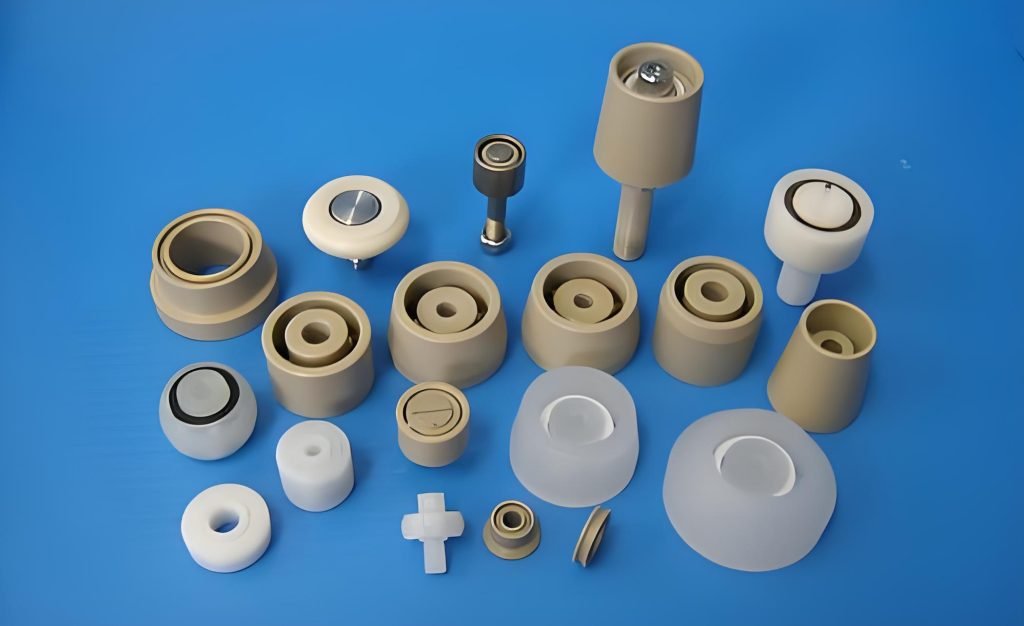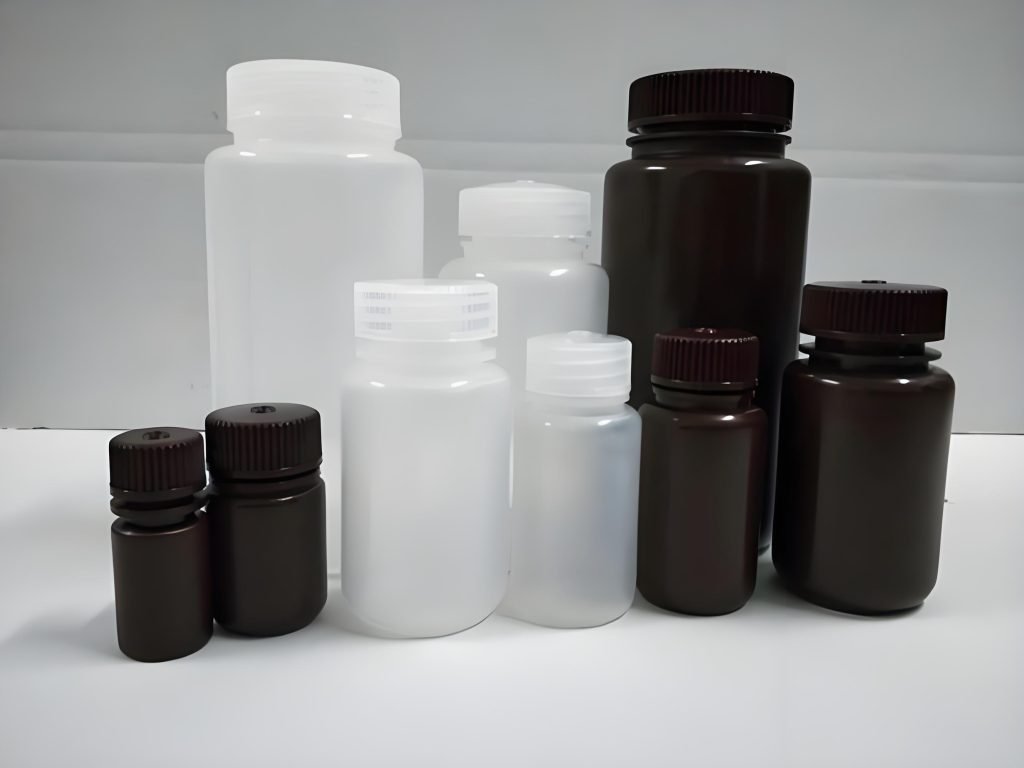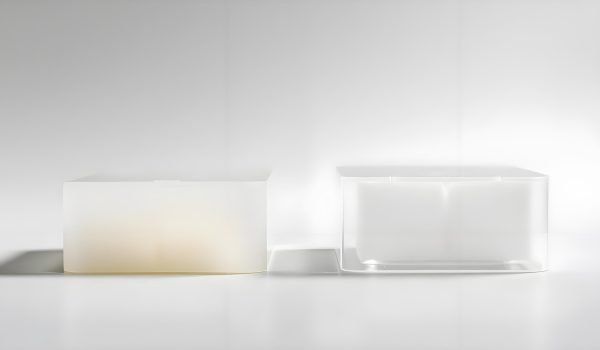Which material will give your custom part the right balance of heat resistance, flexibility, and cost?
Both polymers are lightweight, tough, chemical resistant, and cost effective. One family shines with higher heat tolerance and living‑hinge strength. The other offers grades from rigid (HDPE) to very flexible (LDPE, LLDPE) and handles extreme cold.
As you read on, you’ll learn practical tradeoffs and an action checklist to discuss with Fecision for fast, reliable production of your parts.
Polypropylene vs Polyethylene: Quick Comparison to Guide Your Choice
Match material behavior to your part’s duty: heat, cold, strength, and clarity matter.
At-a-glance differences: heat, cold, flexibility, and chemical resistance
PP withstands higher temperatures with a melting point near 160°C (320°F). It offers excellent flexibility and fatigue resistance, so living hinges and sterilizable parts often use it.
PE performs much better at very low temperatures (down to -80°C/-112°F). That gives better impact performance in cold storage or outdoor snaps.
When each plastic wins: packaging, piping, medical, and consumer products
Choose HDPE for rigid, load-bearing parts and pipes. Pick LDPE or LLDPE for flexible films, clear packaging, and elastic film applications.
For reusable containers, hinge closures, and parts that need sterilization or repeated bending, you’ll likely pick PP. For cold-weather piping, moisture-barrier films in construction, and many packaging films, PE is usually the smarter choice.
What Is Polypropylene (PP)? Properties, Temperatures, and Typical Uses

When your design needs heat tolerance and repeated motion, choose a material built for endurance.
Polypropylene is a lightweight thermoplastic polymer known for its flexibility and fatigue resistance. Its higher melting point—about 160°C (320°F)—lets you use it where sterilization or hot-fill processing is required.
You’ll pick this plastic when living hinges, snap fits, or parts that see repeated bending are central to the design. It offers good strength-to-weight performance and is usually translucent rather than crystal clear.
PP machines easily with low cutting forces and minimal tool wear. It also works well in injection molding and has several printable grades for prototypes and short runs.
Typical applications include reusable containers, hinged caps, labware, automotive trim, rope, carpeting fibers, and roofing parts. Its slightly better chemical resistance makes it a good choice for cleaning-heavy environments and certain lab products.
As an example, specify PP for a refillable bottle cap that must open thousands of times and survive occasional hot rinses without losing quality.
What Is Polyethylene (PE)? Understanding HDPE, LDPE, and LLDPE

Choose the right grade of polyethylene and you’ll match strength, clarity, and processing to your part’s needs.
PE is a family of thermoplastic polymers that covers a wide variety of types. Each grade shifts density and mechanical behavior so you can tune rigidity, flexibility, and optical properties.
hdpe is the rigid choice. It has higher tensile strength and better structural performance for thicker walls. Use it for bottles, jugs, pipes, and load-bearing parts where impact resistance and long-term toughness matter.
ldpe is softer and more elastic. It suits flexible films, squeezable packaging, and many plastic bags where sealability and clarity are important.
LLDPE combines flexibility and puncture resistance in thin sections. That makes it ideal for living hinges, stretchable films, and puncture‑resistant packaging films.
PE melts at lower temperatures than some other plastics (LDPE ~105–115°C; HDPE ~130–137°C) and stays tough at very low temps (about -80°C). It’s a strong electrical insulator but can attract static, so antistatic grades exist.
Match the PE type to your mechanical and optical targets before you finalize tooling and production. That step saves cycles and helps you hit cost and performance goals for packaging and consumer products.
Key Similarities and Differences of PP vs PE Plastic
Practical selection hinges on a few key tradeoffs: thermal limits, optical needs, and how you plan to join parts.
Shared strengths
Both polymers deliver toughness, low weight, and good electrical insulation. That combination makes these plastics common in consumer goods and many food packaging uses.
Each material family includes FDA‑suitable grades for direct food contact. They also offer cost-effective production and chemical resistance for many everyday applications.
Where they diverge
Temperature is a core difference: polypropylene tolerates higher service temperatures (melting point near 160°C) while polyethylene holds up far better at very low temperatures.
Optical and surface traits differ too. LDPE and some HDPE grades can be clear, while polypropylene is usually translucent. PE tends to attract static and needs antistatic grades for sensitive uses.
Weldability and UV behavior vary: PE welds easily but needs UV stabilizers outdoors; PP can yield higher weld strength in proper joins. Finally, PP is typically stiffer and slightly more chemically resistant, so check your chemical list before finalizing material choice.
Manufacturing Methods and Industrial Applications
From prototype to production, the chosen process shapes performance and scale for plastic parts.
How you can make parts today: machining, injection molding, and 3D printing realities
You can machine both plastics quickly for prototypes and low-volume runs. Machining gives tight tolerances with low tool wear and clean chips.
For scale, injection molding produces consistent geometry and fast cycle times. Grade selection controls flow, shrinkage, and cooling during injection molding.
3D printing works for functional validation. You can print PP or PP-like filaments to test hinges and flexible features. For PE-like behavior, PA12 nylon is a practical 3D-print substitute now.
Industry applications by need
Films and bags, and many food packaging uses, are dominated by polyethylene films and LDPE grades. HDPE leads in bottles, jugs, tanks, and rugged outdoor products.
Specify PP for living-hinge caps, sterilizable trays, and fatigue-prone components in medical and automotive assemblies. Both families appear in pipes, fittings, and construction membranes.
Production of custom parts from Fecision
Fecision helps you pick the right grade—HDPE, LDPE, LLDPE, or PP homopolymer/copolymer—then applies DFM to cut cost and lead time.
You’ll get fast quotes, tight-tolerance machining and injection runs, traceable materials, and application testing so parts hit spec on the first pass.
Conclusion
Decide with confidence by weighing each polymer’s strengths against your product’s demands. Use this guide to match melting point, flex fatigue, or cold-performance to your part’s intended use.
Choose polypropylene when higher temperature endurance, repeated hinge action, or sterilization matter. Choose polyethylene when you need cold toughness, clarity options, or a range of densities for packaging, bottles, pipes, or construction membranes.
Engage Fecision early for material selection, DFM, and fast-turn production so your parts meet specs on the first run.




